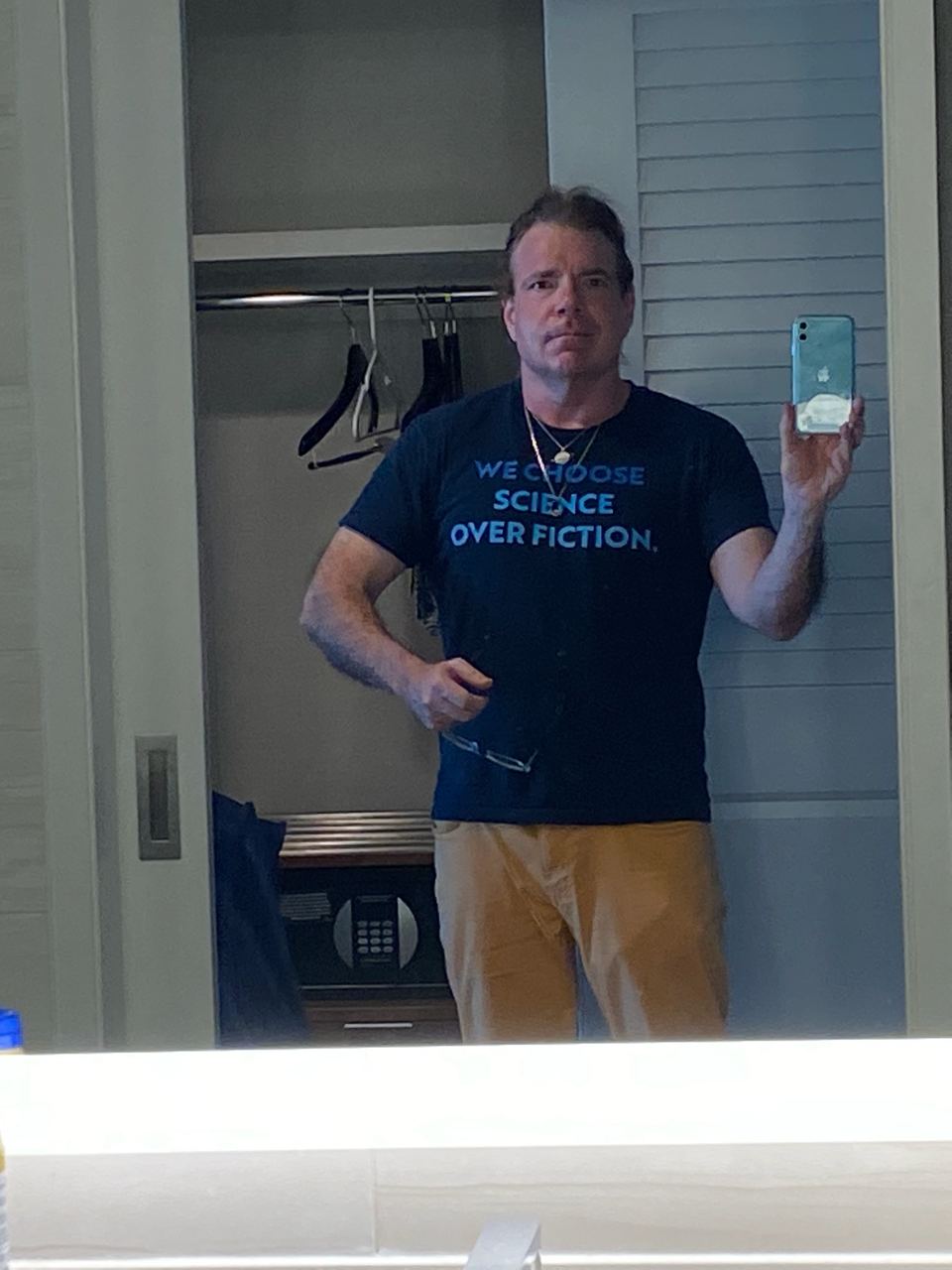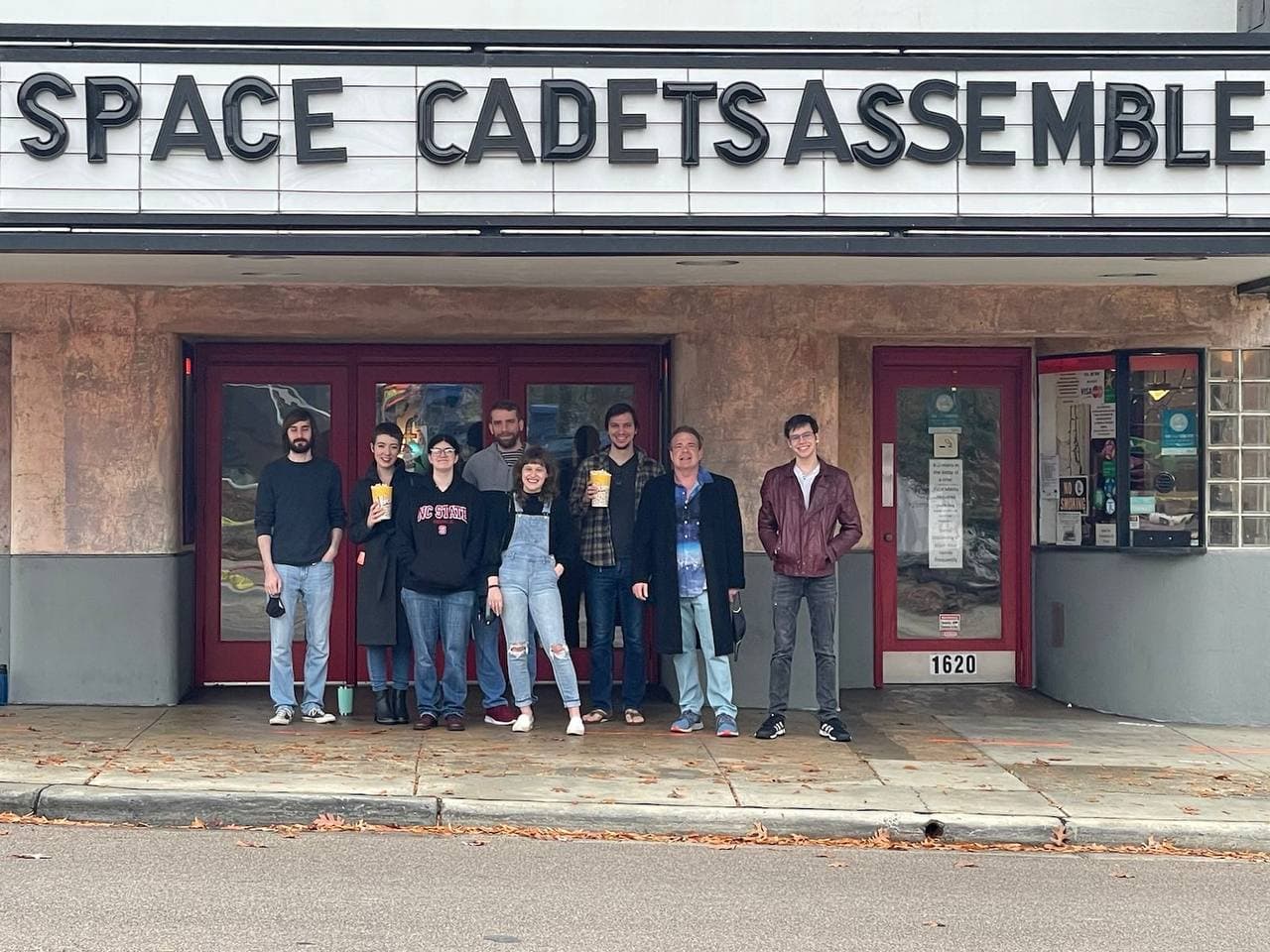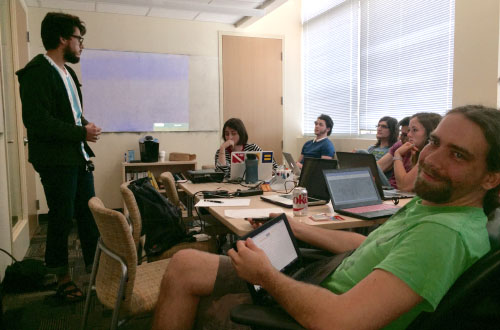




Our youngest chemist with a fondness for salt water, or as Quincy says "structural studies of nano-confined ionic hydration"!
Quincy Jack Space
The Space Cadets preforming The Ballad of Aneese Rahman at the Trimols Symposium (2023)
Lead Vocals:Dr. Brian Space, Matthew Mostrom
Piano:Logan Ritter
Guitar:William Morris
Hype Man: Jeff Powell
Power Point Slide Master: Riley Marder
Professor Brian Space
North Carolina State University (January 2021)
Department of Chemistry
Fellow of the American Association for the Advancement of Science [AAAS]
Email:
Email:
X/Twitter: @brianbspace
Bluesky Social: @brianbspace.bsky.social

(2021) Space Group celebrating a successful first year at North Carolina State University with a private movie showing. From left to right: Logan Ritter, Meagan Mulcair, Lenore Miller, Dr. Adam Hogan, Grace O'Neill, Matthew Mostrom, Dr. Brian Space, Carlos Solanilla
Mission Statement:
The Space Group mission is: 1) to foster qualitative and quantitative reasoning skills individually and through our interactions with others; 2) to develop informed writing, speaking and presentation skills; 3) to perform and facilitate world class science with integrity, discipline and high ethical standards; and 4) to seek new knowledge, going boldly where no one has gone before. In pursuit of this mission we seek to serve our University, community, society, the World and Universe. Our goal is balanced, sustainable progress on the elements of our mission. Science is a method—we are committed to using science in service of humans and humanity.

Space Group meetings stress speaking skills and scientific discussion. Clockwise from left: Luciano Laratelli, Alexis Johnson, Douglas Franz, Sean Carter, Matthew Mostrom, Jessica Rose, Adam Hogan. A complete list of our current students is presented here.
The Space Group is a theoretical chemistry group concerned primarily with computer simulation of condensed phase phenomena. Current focus is on the development of highly accurate potential energy functions for environmentally relevant gases, such as carbon dioxide, hydrogen, nitrogen, methane, oxygen and associated oxides. The potentials are used in molecular simulations of sorption of such gases within metal–organic materials, or MOMs. MOMs are solid, 3D crystalline materials that are constructed with organic ligands linked to metal-containing clusters. They offer great potential as H2 storage, CO2 capture and CO2/CH4/N2/O2 separation platforms. Additionally, they are lightweight, can be intelligently engineered to have large surface areas and can be assembled from molecular building blocks with desired chemical functionality. Computation is a highly effective tool for this, and could lead to the discovery of new, useful MOMs.